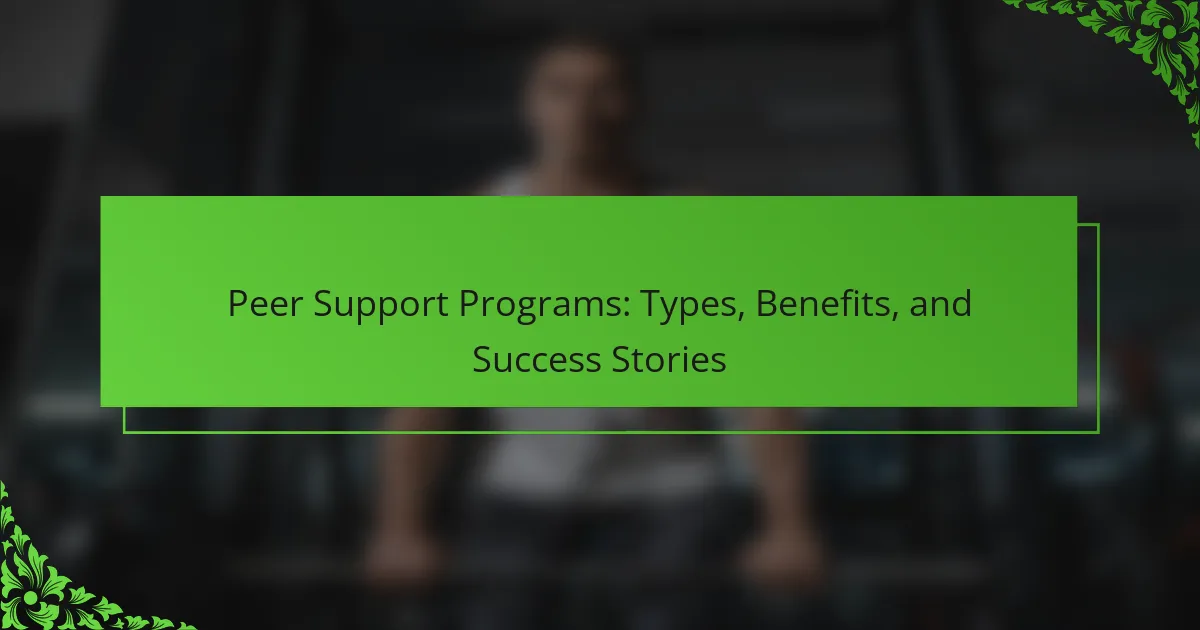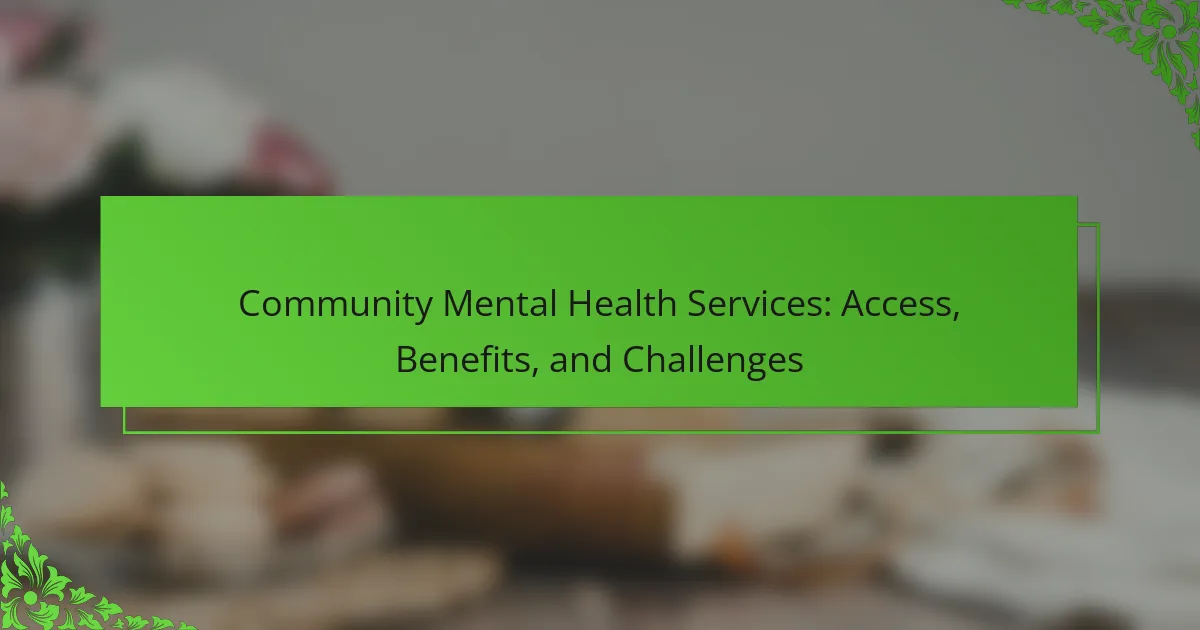Peer support programs enhance emotional well-being and foster connections among participants facing similar challenges. This article explores various types of peer support, their benefits in mental health and recovery, and success stories that demonstrate their effectiveness. Additionally, it addresses challenges these programs face and offers strategies for optimization.
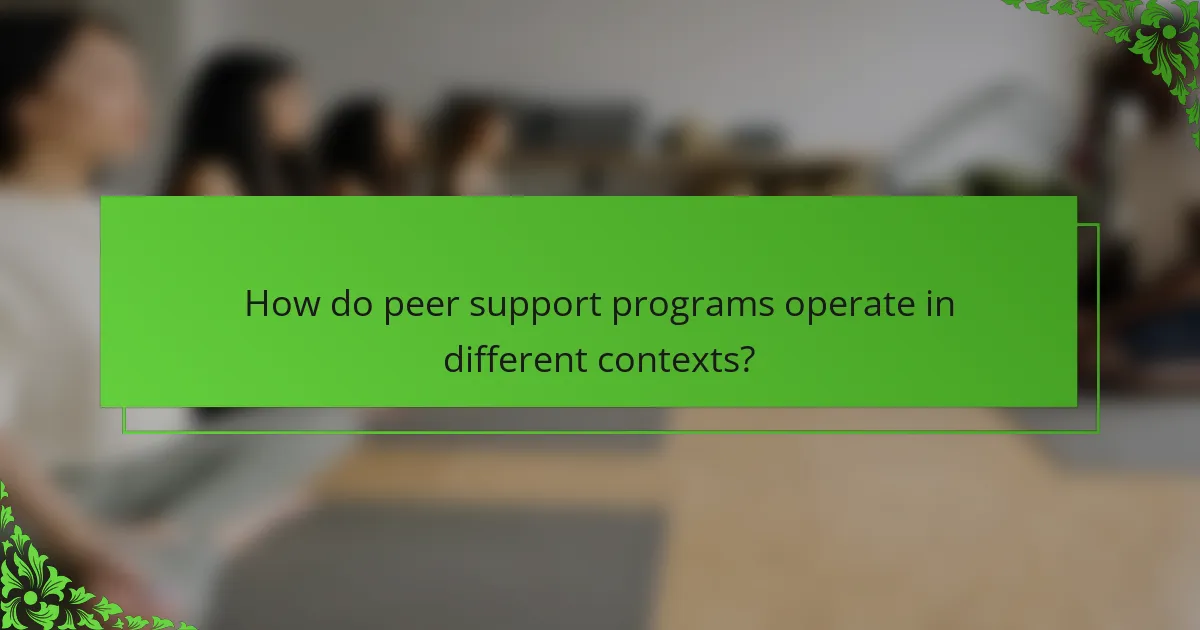
How do peer support programs operate in different contexts?
Peer support programs operate in various contexts by adapting to specific community needs and resources. These programs can be tailored for mental health, chronic illness, or substance use recovery, emphasizing shared experiences and mutual aid. For example, in mental health contexts, peer support enhances emotional resilience through personal stories and coping strategies. In chronic illness, peers provide practical advice on management and lifestyle adjustments. Each context benefits from unique attributes, such as the level of professional oversight or the structure of peer interactions, fostering a supportive environment for participants.
What are the core principles that drive peer support programs?
Peer support programs are driven by core principles such as mutual aid, shared experiences, and empowerment. These principles foster trust and connection among participants, enhancing emotional support and resilience. Programs emphasize inclusivity and respect, creating safe spaces for individuals to share their challenges and successes. Additionally, they promote personal growth and community engagement, leading to positive outcomes for both individuals and groups involved.
Which stakeholders are involved in peer support programs?
Peer support programs involve various stakeholders including participants, peer supporters, mental health professionals, organizations, and community members. Each plays a crucial role in fostering a supportive environment. Participants benefit from shared experiences, while peer supporters provide guidance and empathy. Mental health professionals ensure program efficacy, organizations facilitate resources, and community members help in outreach and engagement.
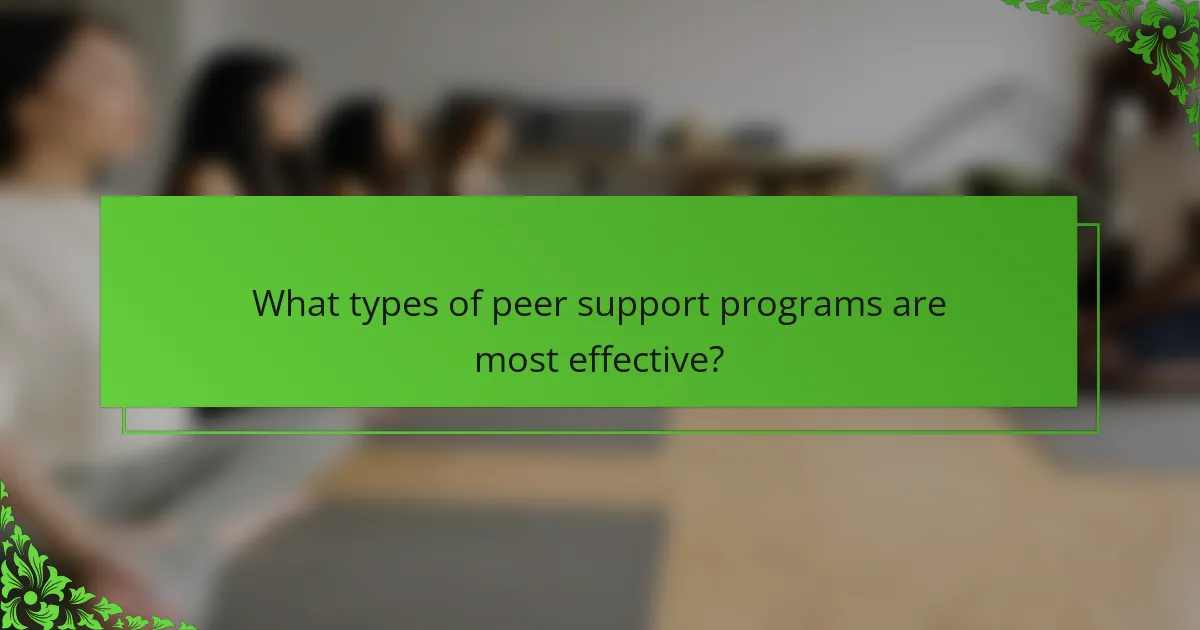
What types of peer support programs are most effective?
Effective peer support programs include structured, group-based models, one-on-one mentoring, online forums, and community outreach initiatives. Each type fosters connection and provides emotional support. Group-based models often yield higher engagement, while online forums offer accessibility. Success stories highlight enhanced mental health and reduced isolation among participants.
How do formal peer support programs differ from informal ones?
Formal peer support programs are structured and often funded, while informal ones are spontaneous and community-driven. Formal programs typically provide training and oversight, ensuring a consistent approach to support. In contrast, informal programs rely on personal experiences and relationships, leading to varied methods and outcomes. Both types offer valuable benefits, but their organization and implementation differ significantly.
What are the roles of trained versus untrained peers?
Trained peers provide structured support and guidance, while untrained peers offer informal, relatable assistance. Trained peers typically undergo specific training to enhance their skills in active listening and problem-solving. This training equips them to handle complex situations effectively, ensuring a higher quality of support. Untrained peers, though valuable, may lack the tools to address deeper issues, relying instead on shared experiences. As a result, trained peers often facilitate better outcomes in peer support programs, enhancing overall participant satisfaction and success rates.
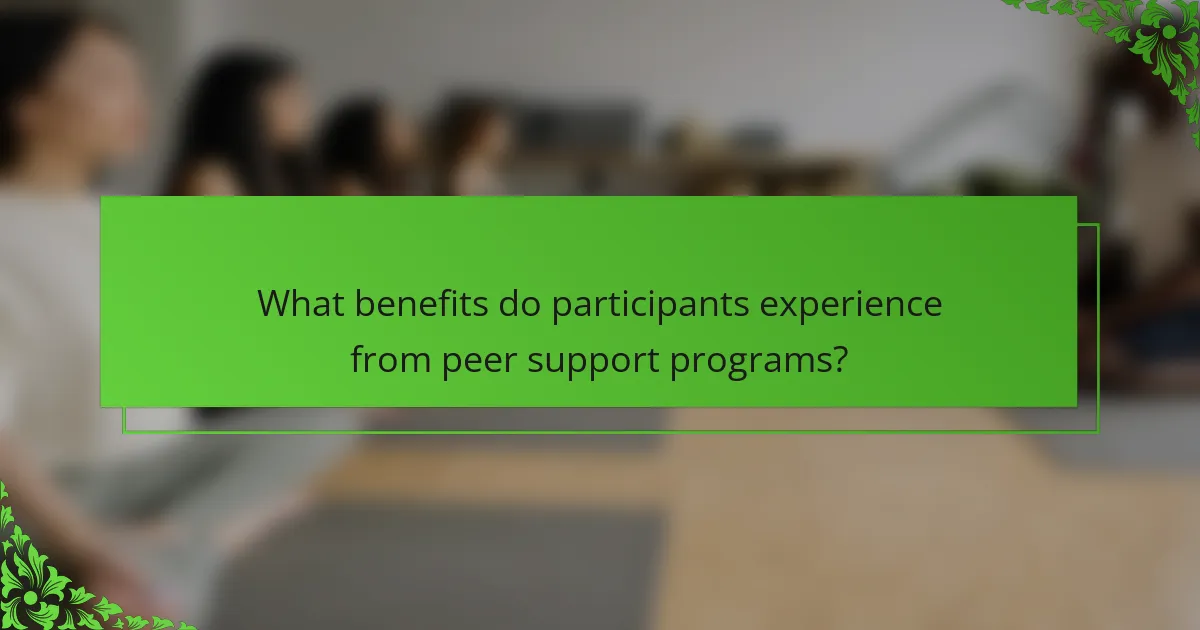
What benefits do participants experience from peer support programs?
Participants in peer support programs experience enhanced emotional well-being, increased social connections, and improved coping skills. These programs foster a sense of belonging, reduce feelings of isolation, and promote personal growth. As a result, participants report higher levels of confidence and resilience. Studies indicate that individuals engaged in peer support often show significant improvements in mental health outcomes.
How do peer support programs enhance emotional well-being?
Peer support programs enhance emotional well-being by providing individuals with a sense of belonging and understanding. These programs foster connections that reduce feelings of isolation and promote shared experiences. Participants often report increased self-esteem and improved coping skills as a result of mutual support. Success stories highlight transformative impacts on mental health, demonstrating the effectiveness of peer interactions in various settings.
In what ways do these programs improve social connections?
Peer support programs enhance social connections by fostering a sense of belonging and community. Participants engage in shared experiences, which builds trust and empathy. These programs also facilitate networking opportunities, allowing individuals to form friendships and support systems. As a result, participants often report increased social interaction and reduced feelings of isolation.
What impact do peer support programs have on recovery outcomes?
Peer support programs significantly enhance recovery outcomes by providing emotional support, shared experiences, and practical advice. Participants often report increased motivation, reduced feelings of isolation, and improved coping skills. A study found that individuals engaged in peer support are 30% more likely to maintain long-term recovery compared to those who do not participate. These programs foster a sense of community, which is crucial for sustained recovery.
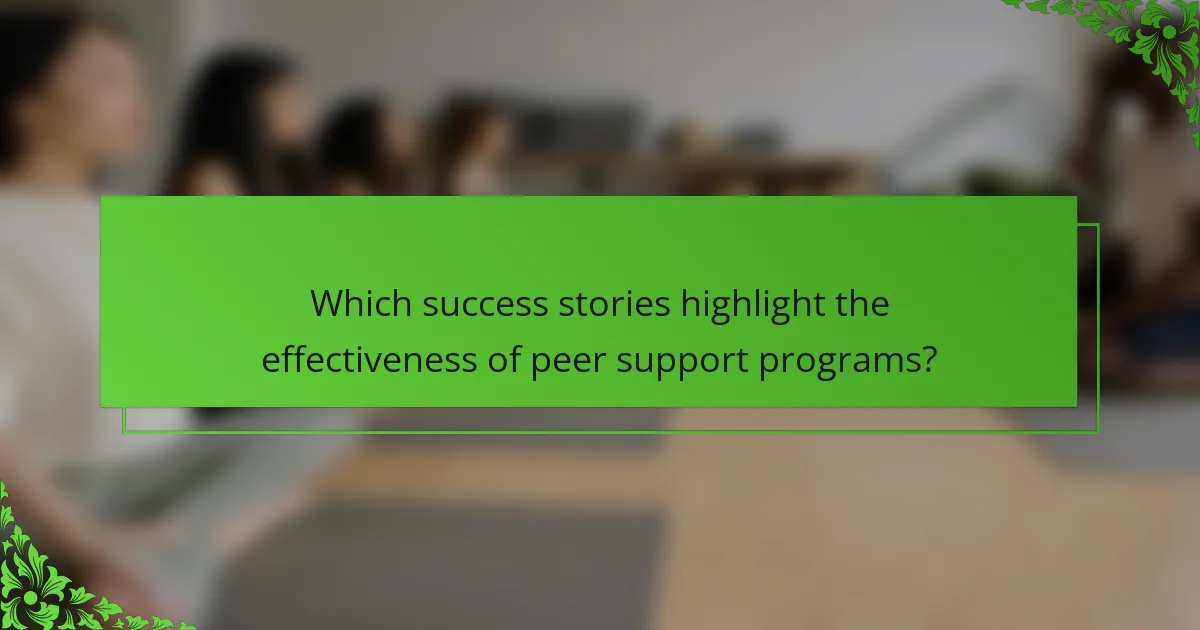
Which success stories highlight the effectiveness of peer support programs?
Peer support programs have demonstrated significant effectiveness through various success stories. One notable example is the “Mental Health First Aid” initiative, which trains individuals to provide support, leading to improved mental health outcomes in communities. Another success story is the “National Alliance on Mental Illness” (NAMI) program, which connects individuals with mental health challenges to trained peers, resulting in increased recovery rates and reduced stigma. Additionally, the “Alcoholics Anonymous” model showcases the power of peer support in addiction recovery, with many participants reporting sustained sobriety and enhanced social connections. These examples highlight the transformative impact of peer support programs across different contexts.
What are notable examples of peer support programs in mental health?
Notable examples of peer support programs in mental health include the National Alliance on Mental Illness (NAMI) and Mental Health America (MHA). NAMI offers peer-led support groups that foster community and understanding. MHA provides peer support services emphasizing recovery and personal growth. Other successful programs include the Hearing Voices Network, which supports individuals experiencing auditory hallucinations, and the Wellness Recovery Action Plan (WRAP), which promotes self-directed recovery strategies. These programs illustrate the effectiveness of peer support in enhancing mental health outcomes.
How have peer support initiatives transformed communities?
Peer support initiatives have significantly transformed communities by fostering connection and resilience. These programs enhance mental health, reduce stigma, and empower individuals through shared experiences. They create supportive environments that promote recovery and well-being. Successful examples include community-based groups that address specific issues, leading to improved social cohesion and resource accessibility.

What challenges do peer support programs face?
Peer support programs face challenges such as funding limitations, participant engagement, and training consistency. These obstacles can hinder program effectiveness and sustainability. Programs often struggle with securing adequate resources to maintain operations and provide quality support. Additionally, ensuring that participants remain engaged and committed can be difficult, impacting the overall success of the initiative. Training volunteers consistently to meet diverse needs presents another challenge, as variability in skills and knowledge can affect support quality.
How do funding and resource limitations affect program sustainability?
Funding and resource limitations significantly hinder program sustainability by restricting operational capacity and service delivery. Insufficient financial support leads to reduced staffing, limited training opportunities, and inadequate resources for participants. As a result, program effectiveness declines, diminishing community trust and engagement. Long-term sustainability requires consistent funding and resource allocation to maintain quality and reach.
What are common misconceptions about peer support programs?
Common misconceptions about peer support programs include the belief that they are only for individuals with severe mental health issues, that they lack structure, and that they replace professional help. Many think peer support is ineffective, yet studies show it enhances recovery. Others assume participants must have identical experiences, while diverse backgrounds enrich support. Additionally, some believe peer supporters are untrained; in reality, they often undergo specific training to guide others effectively.
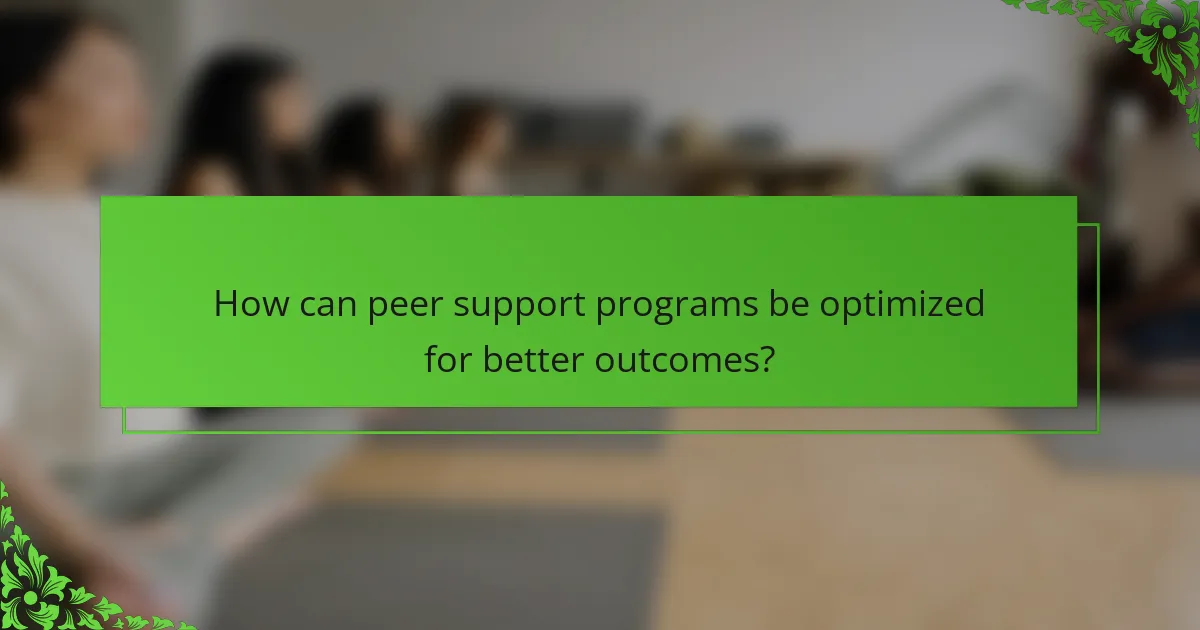
How can peer support programs be optimized for better outcomes?
Peer support programs can be optimized by enhancing training, increasing accessibility, and fostering community engagement. Effective training equips peer supporters with necessary skills, while accessibility ensures diverse populations can participate. Community engagement builds trust and encourages collaboration, leading to improved outcomes. Regular feedback mechanisms can also identify areas for improvement and adapt programs to meet evolving needs.
What best practices should organizations implement in peer support programs?
Organizations should implement structured training, clear communication channels, regular feedback mechanisms, and defined roles in peer support programs. These best practices enhance program effectiveness and participant engagement. Structured training ensures peer supporters are well-equipped to provide assistance. Clear communication fosters trust and transparency among participants. Regular feedback allows for continuous improvement of the program. Defined roles clarify expectations, leading to better support outcomes.
How can feedback mechanisms improve peer support effectiveness?
Feedback mechanisms enhance peer support effectiveness by fostering open communication and continuous improvement. They enable participants to share experiences, identify challenges, and suggest solutions. This iterative process builds trust and strengthens relationships within the group. Additionally, regular feedback helps tailor support strategies to meet individual needs, ultimately leading to better outcomes and increased satisfaction among participants.
What common mistakes should be avoided in developing peer support initiatives?
Common mistakes in developing peer support initiatives include insufficient training for facilitators, lack of clear goals, neglecting participant feedback, and failing to promote inclusivity. These errors can hinder the effectiveness of programs and diminish participant engagement. Addressing these issues early can enhance the overall success of peer support initiatives.
